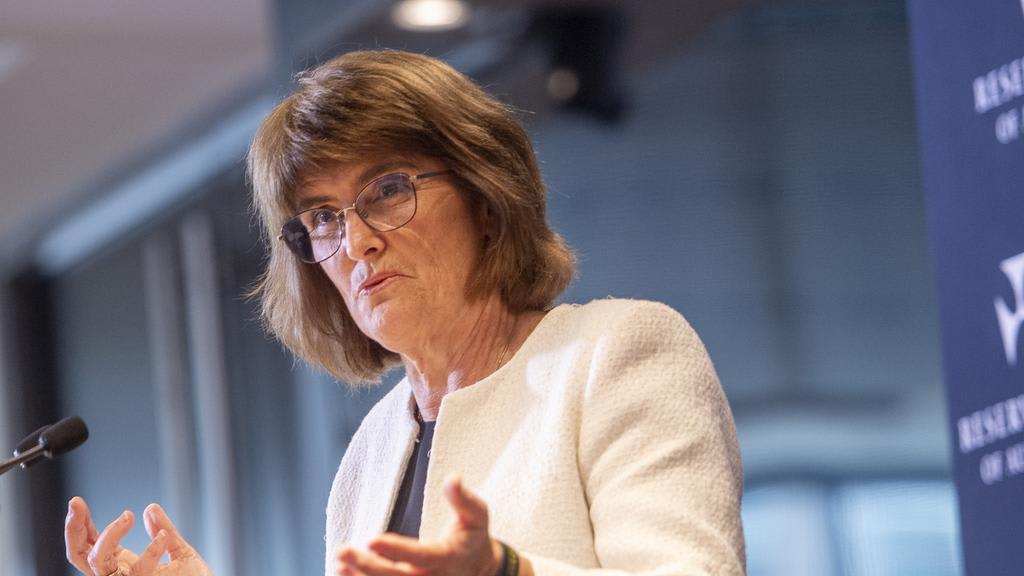An August cash rate cut hinges on labour and employment levels adjusting naturally, households have been warned.
All eyes are firmly on the next meeting of the Reserve Bank of Australia (RBA) in two weeks’ time following July’s shock rate hold, which left economists and markets flummoxed.
Speaking in Sydney on Thursday, governor Michele Bullock defended the controversial decision and said the RBA “can’t wave a magic wand and control how adjustments in the labour market play out”.
The Reserve Bank’s next decision on interest rates will come at the conclusion of its 11-12 August board meeting. Picture: Getty
“Interest rates are too blunt an instrument for that,” she warned. “I am not here to claim credit for the fact that the adjustment has so far taken place in a less costly way.”
Instead, Ms Bullock reiterated the RBA board needs to accurately balance inflation with employment levels.
It comes after questions over whether the cash rate hold was a missed opportunity for households.
“Our overarching goal is to promote the economic prosperity and welfare of the Australian people,” Ms Bullock said. “This means setting monetary policy in a way that best achieves both.
“Our goals of low and stable inflation and full employment are closely linked and generally reinforce each other.”
Labour market tug-o-war
Managing Australia’s labour market has been a careful game of tug-o-war for the bank since COVID-19, made unexpectedly challenging by the war in Ukraine.
“The fact that unemployment has remained low and employment growth has remained strong is remarkable – and very welcome,” she said. “And it is striking that the increase in the unemployment rate has been small compared with the large decline in inflation.”
She said the bank does not look for a specific outcome, like a specific unemployment rate, as there are too many ways the labour market can adjust.
Since cutting the cash rate by 0.25% in May, Ms Bullock said the board is aware labour market conditions could be less tight than the bank forecast.
By this token, cutting the cash rate without more indicative data could be a risky game.
“Last week brought us the latest labour market data, which confirmed that the unemployment rate increased in the June quarter,” Ms Bullock said. “The labour market moved a little further towards balance, as we were anticipating.
“While the June monthly data showed a noticeable pick-up in the unemployment rate, other measures – such as the vacancy rate – have been stable recently.”
Governor Michele Bullock is always quick to remind Australians that the board is focussed on more than just interest rates. Picture: supplied
Ms Bullock has long defended both the board’s dual mandate and its unique trajectory next to other similar economies.
The gradual easing of inflation back to within the board’s 2-3% target range seems secure, though data next week will confirm whether or not the bank can class the easing as stable.
From there, it will become clearer whether August will be the time for the much anticipated third rate cut.
While the bank says it has limited levers it can pull for now, Ms Bullock confirmed leading indicators are not pointing to further increases in the unemployment rate in the near future – a positive indication another cut may well be just around the corner.
This article first appeared on Mortgage Choice and has been republished with permission.

No responses yet